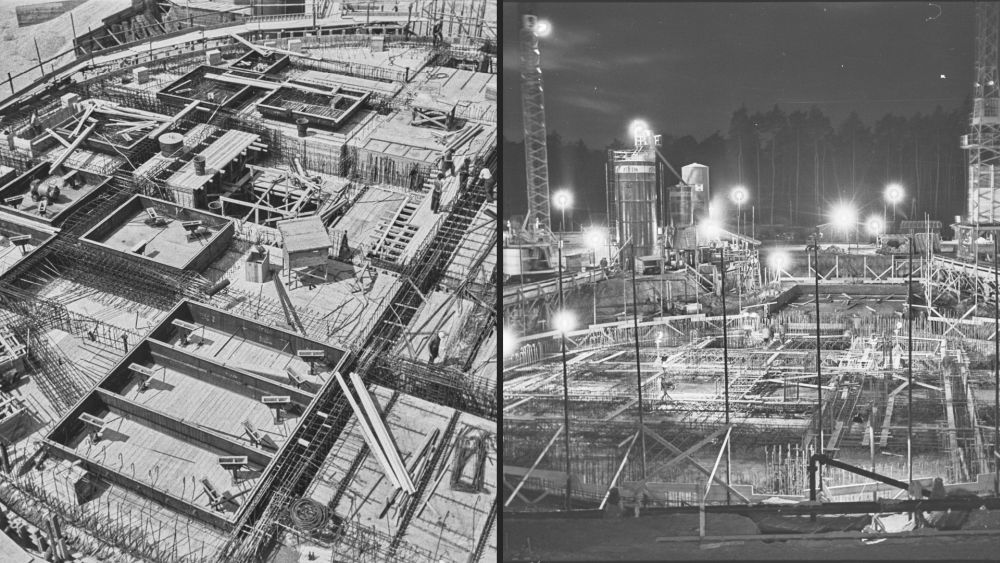200 Years of Pioneering Spirit: The Energy Transition as the Legacy of Nuclear Research
In the 1950s, Germany experienced a wave of nuclear euphoria. The vision: a secure, affordable, and sovereign energy supply for the rapidly growing German economy. A center for nuclear research was to be established to restore the war-torn country’s technological leadership. Karlsruhe became the hub of this energy future – not least due to its proximity to the long-established Technical University. In 1956, construction began of one of Europe’s most advanced research facilities – located in the middle of the Hardtwald forest, formerly the hunting grounds of the Grand Dukes of Baden.
Entering the Nuclear Era – Germany’s First Domestically Built Reactor
By 1961, the first German-developed research reactor, FR2, was operational. Its construction was a monumental undertaking. The reactor was a technical masterpiece, completed in just four years. Collaboration between the university and the research center was close – many professors taught and conducted research in both institutions.
The fast breeder reactor was intended to solve the energy issue once and for all in the early 1970s. However, the technology was complex, the costs high – and following the nuclear accidents at Three Mile Island and Chernobyl, public sentiment shifted dramatically. Protests intensified, and projects were halted. Yet the original vision of a safe, affordable, and environmentally friendly energy supply remained unchanged. Many research fields that are now central to the energy transition have their roots in nuclear research.
From Reactor to Energy Transition: New Fields of Research Emerge
Research was not limited to reactor technology. Meteorologists at the Nuclear Research Center collected weather data and developed specialized simulations to predict the spread of a radioactive cloud, thereby contributing to the assessment of potential incidents at nuclear power plants.
These simulations later became essential for environmental research, such as modeling the dispersion of pollutants from industrial chimneys – a major advancement in the planning of industrial facilities. Even decades later, the relevance of these models remains evident: During the COVID-19 pandemic from 2020 to 2023, researchers used simulation programs to calculate how viruses exhaled by infected individuals spread within enclosed spaces.
Equally noteworthy are the advances in energy storage: electrochemical research, originally conducted for radiation protection and reactor chemistry, now forms the foundation of battery research at KIT. Fusion research also traces its origins to classical nuclear technology.
History demonstrates that research is never in vain, even when its original goals evolve. Knowledge once essential for building reactors is now propelling the energy transition forward.
mex, October 23, 2025

